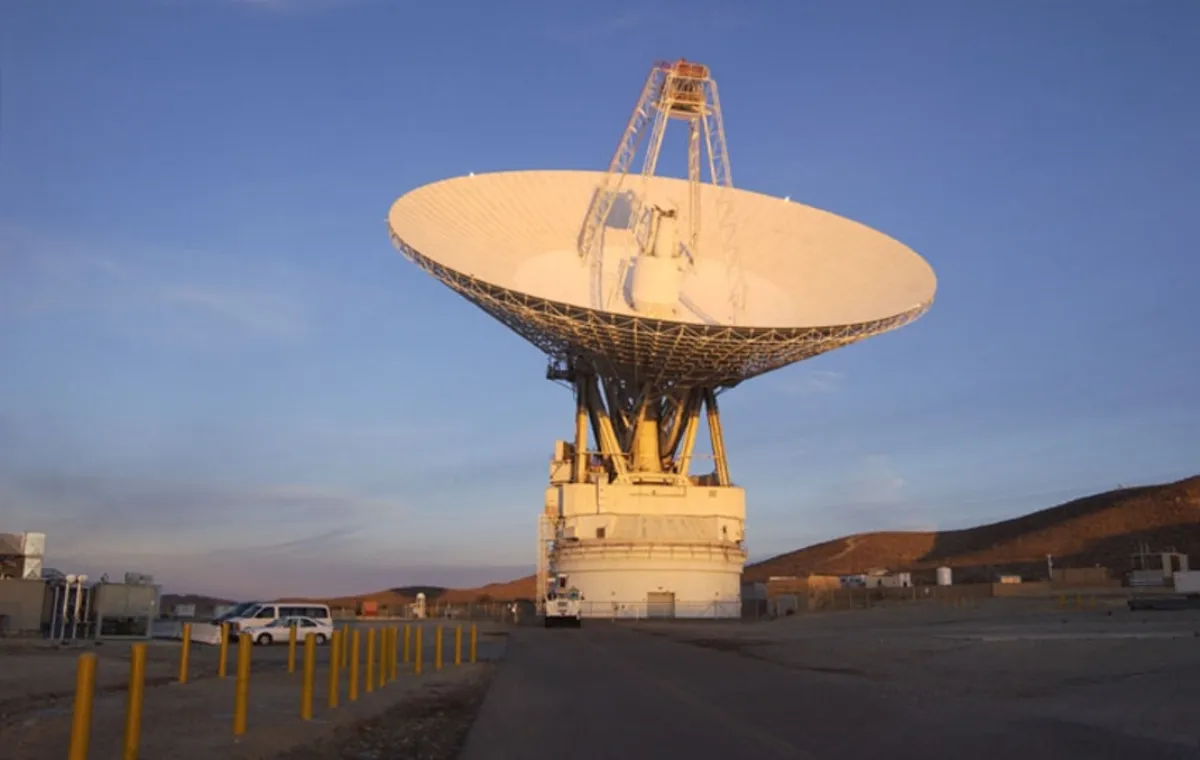
In September, one of the most crucial components of NASA’s Deep Space Network (DSN) suffered significant damage, resulting in its extended downtime. This incident raises concerns about the operational capacity of the DSN, which is vital for communication with spacecraft exploring the outer solar system. On November 10, NASA’s Jet Propulsion Laboratory (JPL) confirmed that the 70-meter antenna, located at the Goldstone Deep Space Communications Complex in California, has been offline since September 16, with no clear timeline for its return.
According to JPL, the incident occurred when the large 70-meter radio frequency antenna, designated DSS-14, over-rotated, causing substantial stress on its cabling and piping. This malfunction also damaged hoses from the antenna’s fire suppression system, resulting in flooding that was promptly addressed. As the largest antenna at the Goldstone site, DSS-14 plays a critical role in the DSN's operations, making its inactivity a significant concern for NASA and its ongoing missions.
The Deep Space Network comprises several antennas, with two other 70-meter antennas located at DSN sites in Madrid, Spain, and Canberra, Australia. These 70-meter antennas are essential for communicating with spacecraft operating in the outer solar system, as well as for missions closer to Earth that require high data rates or face technical difficulties. Each DSN site also has multiple smaller antennas to support various communications needs.
Rumors regarding the damage to DSS-14 had circulated for weeks, especially as real-time monitoring websites indicated its status as “Antenna Unplanned Maintenance.” JPL previously refrained from commenting on the antenna's situation, attributing the lack of information to difficulties in coordinating with NASA offices during a government shutdown. The recent statement from JPL did not provide a timeline for when DSS-14 might resume normal operations; however, it noted that NASA has convened a mishap investigation board to assess the situation.
The antenna remains offline as board members, engineers, and technicians evaluate the structure and determine necessary repairs. JPL indicated that further information regarding the board’s findings and the next steps for returning DSS-14 to service would be released after the federal government reopens. Notably, extended outages for DSN’s 70-meter antennas are not unprecedented; for example, DSS-43 in Australia underwent an 11-month upgrade period in 2020 and 2021, which hindered its ability to transmit.
The absence of any DSN antenna adds pressure to a network already reported to be overstretched. A 2023 audit by NASA’s Office of Inspector General highlighted that the DSN is currently oversubscribed and faces increasing demands driven by a growing number of deep space missions. The situation became more pronounced during the Artemis 1 mission in 2022, which relied on the DSN for communication with the Orion spacecraft and several cubesat secondary payloads. Other missions, such as the James Webb Space Telescope, have had to adjust their operations due to limited access to the network.
As Suzanne Dodd, director of the interplanetary network directorate at JPL, remarked during a 2023 advisory committee meeting, when Artemis operations commence, other missions may be sidelined, impacting scientific endeavors. Additionally, she expressed concerns about the declining budgets for maintaining the DSN, indicating that looking ahead to the 2030s poses significant challenges for the network’s sustainability.